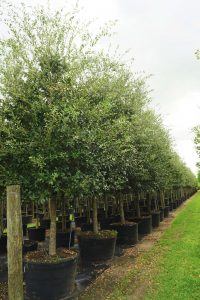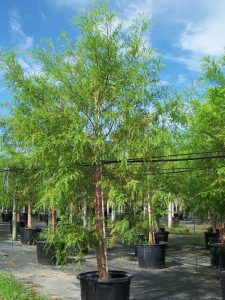Have your ever wonder about weeds in trees? In nature, trees serve as habit and shelter for a large number of animal species, and also as host plants for other types of vegetation. This host role also spontaneously takes place in trees growing in parks and gardens, especially in the subtropics.
Gardeners should be aware of the different kinds of these weeds, whether or not they are harmful to the host tree, and what if there is something you can do about them. Together, these woody or non-woody plants depend upon trees for various ecological services: support, shade, moisture, nutrients, pollination and germination. Epiphytes and parasites are two naturally-occurring plants in trees.
<h2>Weeds in trees: Epiphytes</h2>
Epiphytes. Are mostly reference as air plants because of their occurrence on tree trunks and branches, and they are not in contact with the ground. Because they obtain moisture and nutrients from the air and rainfall. This group of plants needs a host plant for support, without doing it any harm; it has no roots but clings to trees by tiny scales (trichomes).
The Spanish Moss (Tillandsia usneoides) is a classic example; despite the name, it is not a true moss; but a flowering plant in the Bromeliad family. The plant forms long, silver-gray chainlike structures which can reach several feet in length. Propagation is by seed or leaf fragments vegetatively, both dispersed by wind. Spanish most commonly grows on Live Oak (Quercus virginiana) and Bald Cypress (Taxodium distichum), giving the host tree the appearance of a decoration. Another common epiphyte is Ball Moss (T. recurvata), a similar-appearing close relative.
Although, excessive growth of epiphytes may be a problem if they interfere with leaf growth. Spanish Moss is easy to pull down to reduce its presence. Not only confined to trees, Spanish Moss may festoon rock cliffs, fences and power lines. Spanish Moss is a popular nesting material for birds, and creates an ecological niche sheltering rat snakes, bats and spiders. Human use of Spanish Moss includes building insulation, packing material and in arts and crafts.
Apparently, some epiphytes and their hosts have co-evolved and have contemporaneous flowering seasons and shared insect pollinators. Other familiar desirable garden epiphytes are bromeliads and orchids. These may be “planted” on tree trunks or branches.
<h2>Parasites</h2>
Parasites. Parasitic plants not only depend upon a host tree for support, but produce modified roots (haustoria) to penetrate directly into the tree’s conductive tissue to obtain some or all of their water and nutrient needs.
Like epiphytes, parasites are flowering plants. Mistletoe is the best-known; in North America represented by the evergreen flowering plants (Phoradendron spp.). It is dispersed by birds which eat the white fruits and drop the sticky seeds onto tree bark where they attach and germinate. Mistletoe has green leaves and develops a roundish shape among the branches of the host tree and may not be obvious among the foliage.
In Florida, mistletoe is common on oak trees. Parasites should be removed from any tree by cutting the entire branches, as they are attached to or the haustorium, because they are detrimental to the health and growth of the host. Mistletoe has cultural relevance, often used as a Christmas decoration under which lovers kiss. But the plant and fruit are both toxic and should be handled with care.
If you have any doubts concerning weeds in trees or other subjects, feel free to contact us!






Post a comment